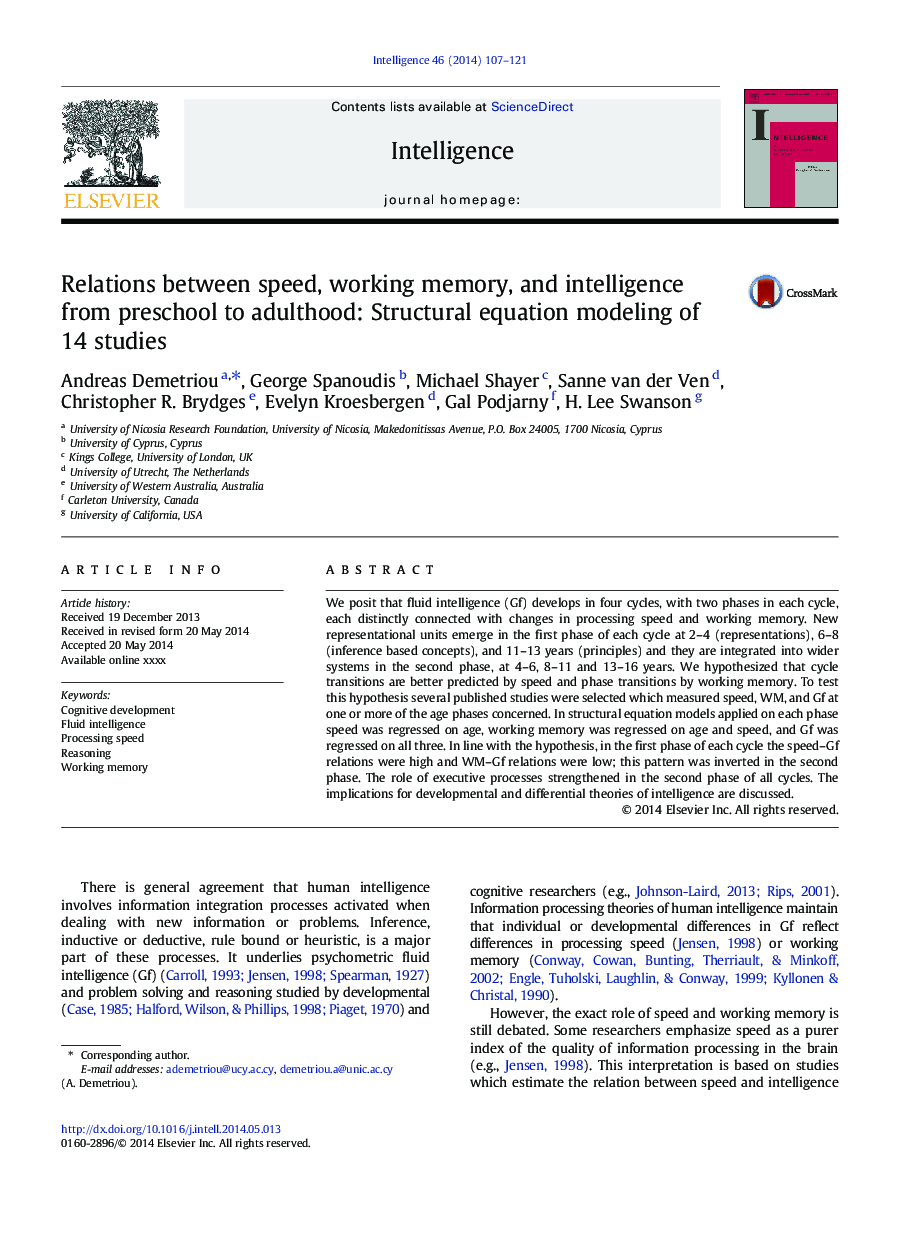| کد مقاله | کد نشریه | سال انتشار | مقاله انگلیسی | نسخه تمام متن |
|---|---|---|---|---|
| 7294278 | 1474270 | 2014 | 15 صفحه PDF | دانلود رایگان |
عنوان انگلیسی مقاله ISI
Relations between speed, working memory, and intelligence from preschool to adulthood: Structural equation modeling of 14 studies
ترجمه فارسی عنوان
ارتباط سرعت، حافظه کاری و هوش از دبستان تا بزرگسالی: مدلسازی معادلات ساختاری 14 مطالعه
دانلود مقاله + سفارش ترجمه
دانلود مقاله ISI انگلیسی
رایگان برای ایرانیان
کلمات کلیدی
توسعه شناختی، هوش مایع سرعت پردازش، استدلال حافظه کاری،
موضوعات مرتبط
علوم انسانی و اجتماعی
روانشناسی
روانشناسی تجربی و شناختی
چکیده انگلیسی
We posit that fluid intelligence (Gf) develops in four cycles, with two phases in each cycle, each distinctly connected with changes in processing speed and working memory. New representational units emerge in the first phase of each cycle at 2-4 (representations), 6-8 (inference based concepts), and 11-13 years (principles) and they are integrated into wider systems in the second phase, at 4-6, 8-11 and 13-16 years. We hypothesized that cycle transitions are better predicted by speed and phase transitions by working memory. To test this hypothesis several published studies were selected which measured speed, WM, and Gf at one or more of the age phases concerned. In structural equation models applied on each phase speed was regressed on age, working memory was regressed on age and speed, and Gf was regressed on all three. In line with the hypothesis, in the first phase of each cycle the speed-Gf relations were high and WM-Gf relations were low; this pattern was inverted in the second phase. The role of executive processes strengthened in the second phase of all cycles. The implications for developmental and differential theories of intelligence are discussed.
ناشر
Database: Elsevier - ScienceDirect (ساینس دایرکت)
Journal: Intelligence - Volume 46, SeptemberâOctober 2014, Pages 107-121
Journal: Intelligence - Volume 46, SeptemberâOctober 2014, Pages 107-121
نویسندگان
Andreas Demetriou, George Spanoudis, Michael Shayer, Sanne van der Ven, Christopher R. Brydges, Evelyn Kroesbergen, Gal Podjarny, H. Lee Swanson,
